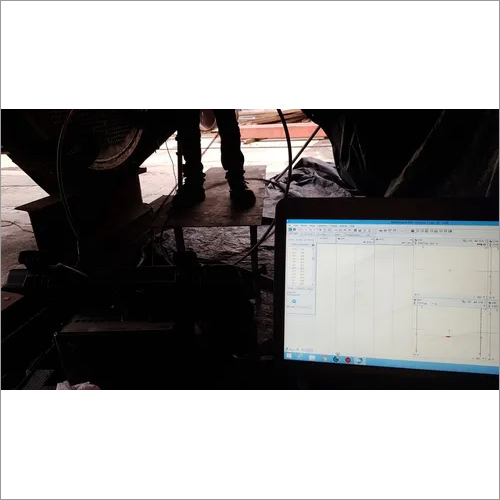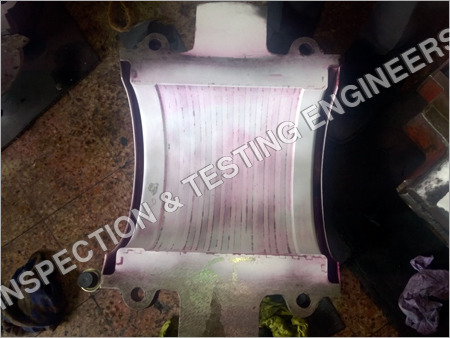Most popular produts
Ultrasonic Flaw Detection
Ultrasonic Flaw Detection Trade Information
- Payment Terms
- Cash on Delivery (COD), Cash Against Delivery (CAD), Cash in Advance (CID), Cheque, Cash Advance (CA)
- Sample Available
- Yes
- Main Export Market(s)
- Middle East, Africa, Asia
- Main Domestic Market
- All India
- Certifications
- ASNT, ISO, NABL, etc.
About Ultrasonic Flaw Detection
Ultrasonic Testing makes use of short Ultrasonic pulse-waves. Comforted with center frequencies ranging from 0.1 MHz-15 MHz that can rise up to 50 MHz on certain occasions, these waves are quiet efficient. Incorporated into specimen to categorize materials,pulse-waves detect internal defects. Ultrasonic thickness measurement test determines the thickness of the test material like monitor paperwork,. Ultrasonic testing is performed on various metals and alloys such as steel. However, owing to its less resolution, it is perfect for thickness test of concrete, wood and composites. NDT method and this non destructive process is also used in multiple transportation related industries like aerospace, automotive, etc. Transducer performs on both the sending and the receiving of the pulsed waves in pulse echo mode. In this specific process, when the sound comes in the contact of any object or wall, it is reflected back. Results are produced in form of a signal by diagnostic machine along with an amplitude which denotes the reflection intensity and the distance, representing the reflection arrival time.Advantages
- Exact estimate of the shape, nature, size of defects.
- Requirement of minimum part preparation.
- Even the Detection of tiny flaws is allowed owing to optimum sensitivity.
- Only single-sided access is needed because of the use of pulse-echo technique.
- Harmless towards the equipment and material present in the operating
- Accurate and nondestructive means in determining the internal flaws depth and thickness of parallel surfaces parts.
- Both surface and subsurface discontinuities sensitivity.
- Many different uses such as measurement of thickness are recorded.
- Fitted electronic equipment deliver instantaneous results.
- High penetrating power helping in detection of flaws deep in the parts.
- Detailed images are generated by Automated systems.
- Thickness measurement, in addition to flaw detection.
- Detailed images can be produced with automated systems.
- Electronic equipment provides instantaneous results.
- Minimal part preparation is required.
- It is sensitive to both surface and subsurface discontinuities.
- Capable of portable or highly automated operation.
- No harmful effects on equipment and materials.
- Some capability of estimating the size, orientation, shape and nature of defects.
- Greater accuracy than other nondestructive methods in determining the depth of internal flaws and the thickness of parts with parallel surfaces.
- High sensitivity, permitting the detection of extremely small flaws.
- Highly automated or portable operation capability.
Accurate Steel Flaw Detection
Detect hidden flaws and inconsistencies in steel components up to a depth of 6000 mm. This portable digital flaw detector ensures trustworthy assessment for various industries, including construction and manufacturing, ensuring compliance with safety standards.
Efficient and Portable Design
Weighing just 1.8 kg and with compact dimensions, the flaw detector is easy to carry and operate in diverse environments. Its battery life of up to 8 hours allows extended usage without frequent recharging, ideal for fieldwork across India.
User-Friendly Interfaces and Versatile Application
Equipped with USB and serial interfaces, the device integrates smoothly with existing data management systems. The support for single or double crystal transducers enables flexibility and precision for a wide range of inspection requirements.
FAQs of Ultrasonic Flaw Detection:
Q: How does the Ultrasonic Flaw Detection device identify flaws in steel structures?
A: The device emits ultrasonic pulses into steel, and any internal flaw causes disruptions in the received signal. By analyzing these signals, the detector locates and displays the size and position of defects within the material.Q: What is the process for conducting an inspection using this flaw detector?
A: To perform an inspection, the operator calibrates the device, selects the suitable transducer (single or double crystal), and moves it over the test area. The instrument automatically records and processes data, making flaw identification straightforward and efficient.Q: When should I use this portable flaw detector for structural analysis?
A: The detector is ideal for routine maintenance checks, pre-installation assessments, and quality assurance during production. It is particularly recommended when visual inspection cannot detect sub-surface flaws and when quick, non-destructive testing is required.Q: Where can the Ultrasonic Flaw Detection device be operated successfully?
A: Designed for flexibility, the device can function in various environments across India, including construction sites, industrial plant floors, and laboratories, thanks to its wide operating temperature range and portable form factor.Q: What benefits does this flaw detector provide over traditional inspection methods?
A: Compared to conventional methods, ultrasonic flaw detection offers non-destructive, highly accurate results, deeper detection ranges, and immediate feedback, enabling better decision-making for maintenance or repairs.Q: How long can I use the detector without recharging, and what power options are available?
A: The built-in battery allows up to 8 hours of continuous operation, making the device suitable for extended fieldwork. Recharging is straightforward using standard power sources.
- Main Domestic Market
- All India
- Main Export Market(s)
- Middle East, Africa, Asia
Tell us about your requirement

Price:
Quantity
Select Unit
- 50
- 100
- 200
- 250
- 500
- 1000+
Additional detail
Mobile number
Email
More Products in Related Inspection & Testing Services Category
 |
INSPECTION & TESTING ENGINEERS
All Rights Reserved.(Terms of Use) Developed and Managed by Infocom Network Private Limited. |
 English
English Spanish
Spanish French
French German
German Italian
Italian Chinese (Simplified)
Chinese (Simplified) Japanese
Japanese Korean
Korean Arabic
Arabic Portuguese
Portuguese













